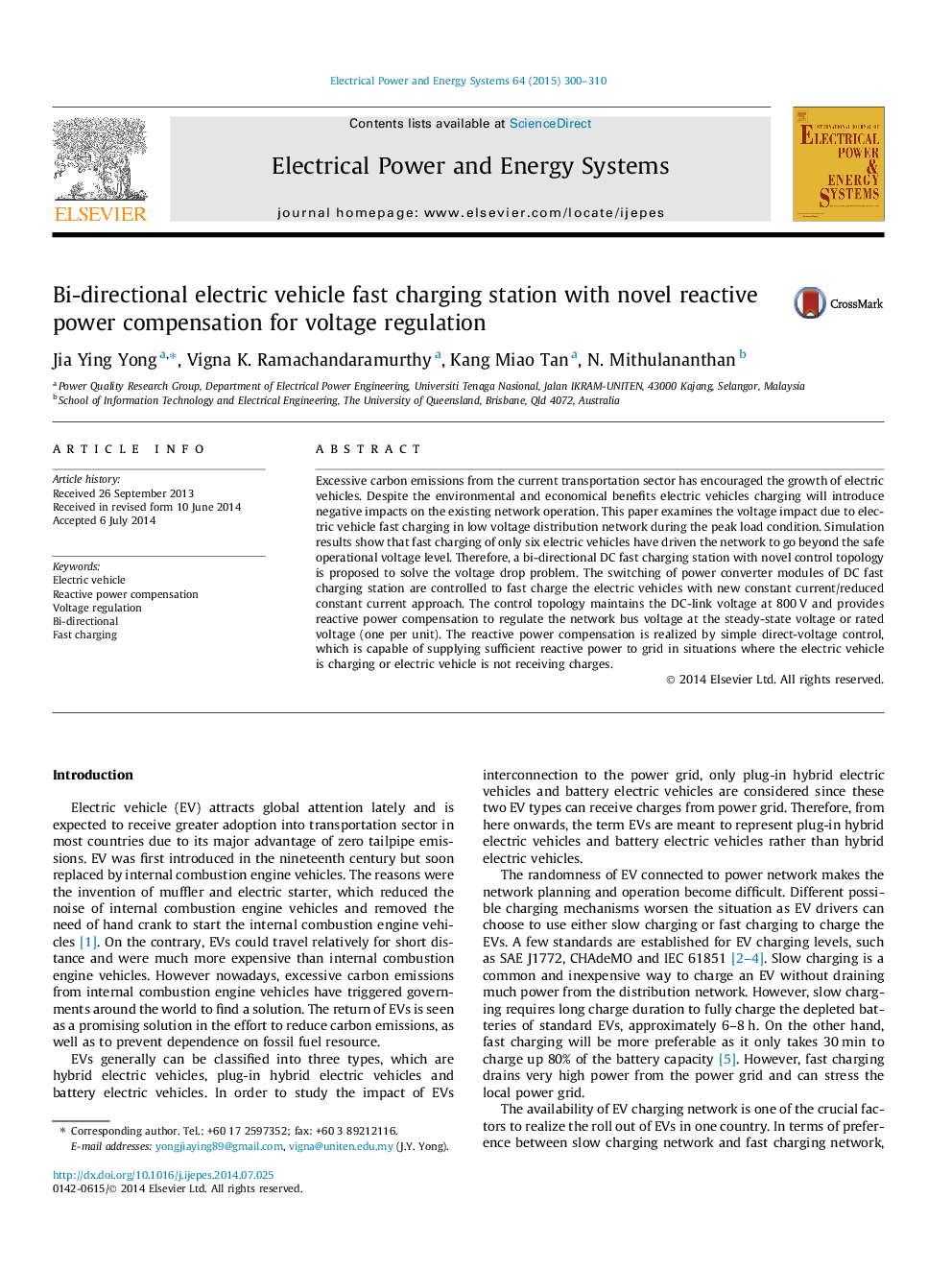| Article ID | Journal | Published Year | Pages | File Type |
|---|---|---|---|---|
| 6859925 | International Journal of Electrical Power & Energy Systems | 2015 | 11 Pages |
Abstract
Excessive carbon emissions from the current transportation sector has encouraged the growth of electric vehicles. Despite the environmental and economical benefits electric vehicles charging will introduce negative impacts on the existing network operation. This paper examines the voltage impact due to electric vehicle fast charging in low voltage distribution network during the peak load condition. Simulation results show that fast charging of only six electric vehicles have driven the network to go beyond the safe operational voltage level. Therefore, a bi-directional DC fast charging station with novel control topology is proposed to solve the voltage drop problem. The switching of power converter modules of DC fast charging station are controlled to fast charge the electric vehicles with new constant current/reduced constant current approach. The control topology maintains the DC-link voltage at 800Â V and provides reactive power compensation to regulate the network bus voltage at the steady-state voltage or rated voltage (one per unit). The reactive power compensation is realized by simple direct-voltage control, which is capable of supplying sufficient reactive power to grid in situations where the electric vehicle is charging or electric vehicle is not receiving charges.
Related Topics
Physical Sciences and Engineering
Computer Science
Artificial Intelligence
Authors
Jia Ying Yong, Vigna K. Ramachandaramurthy, Kang Miao Tan, N. Mithulananthan,
